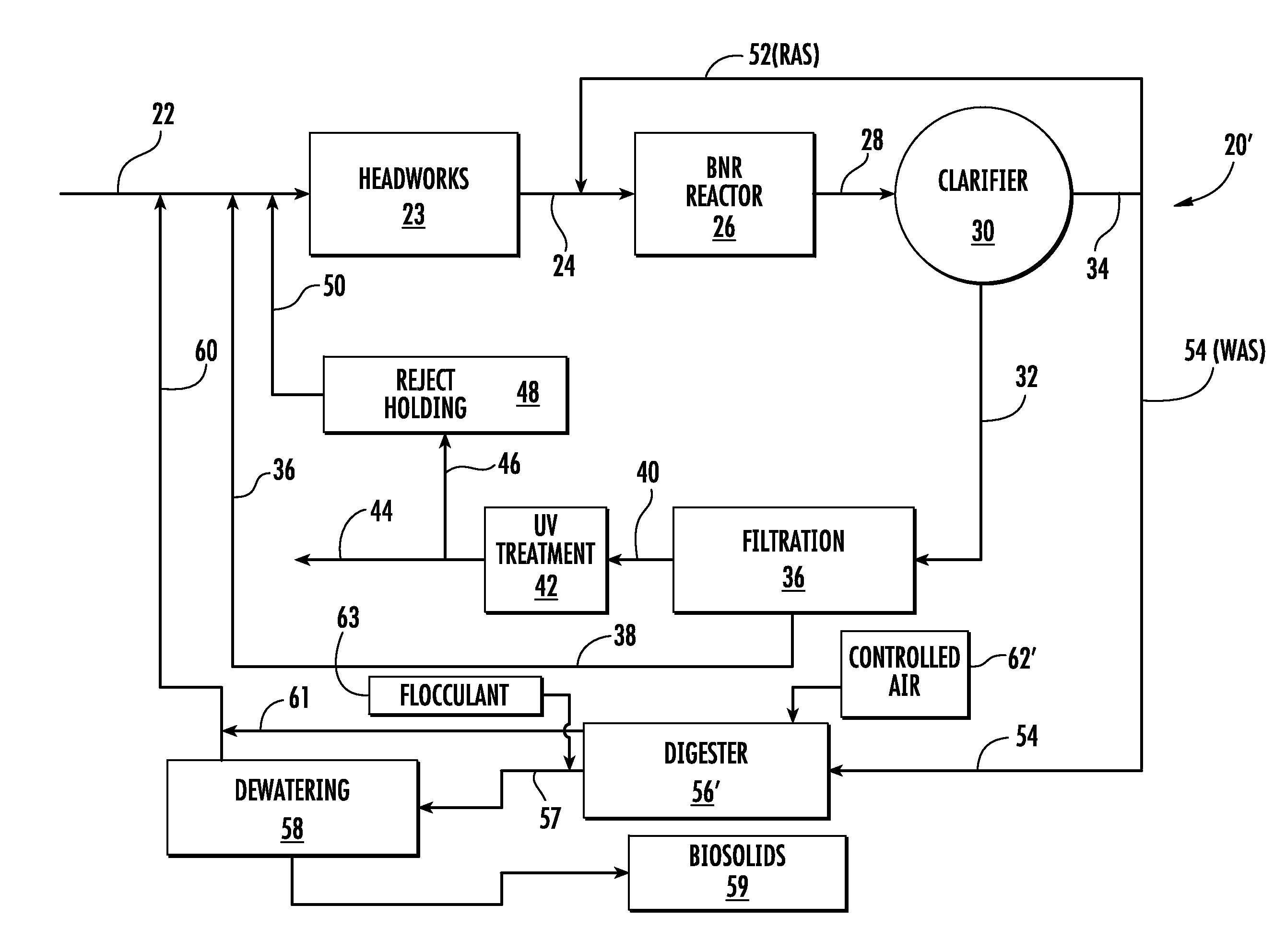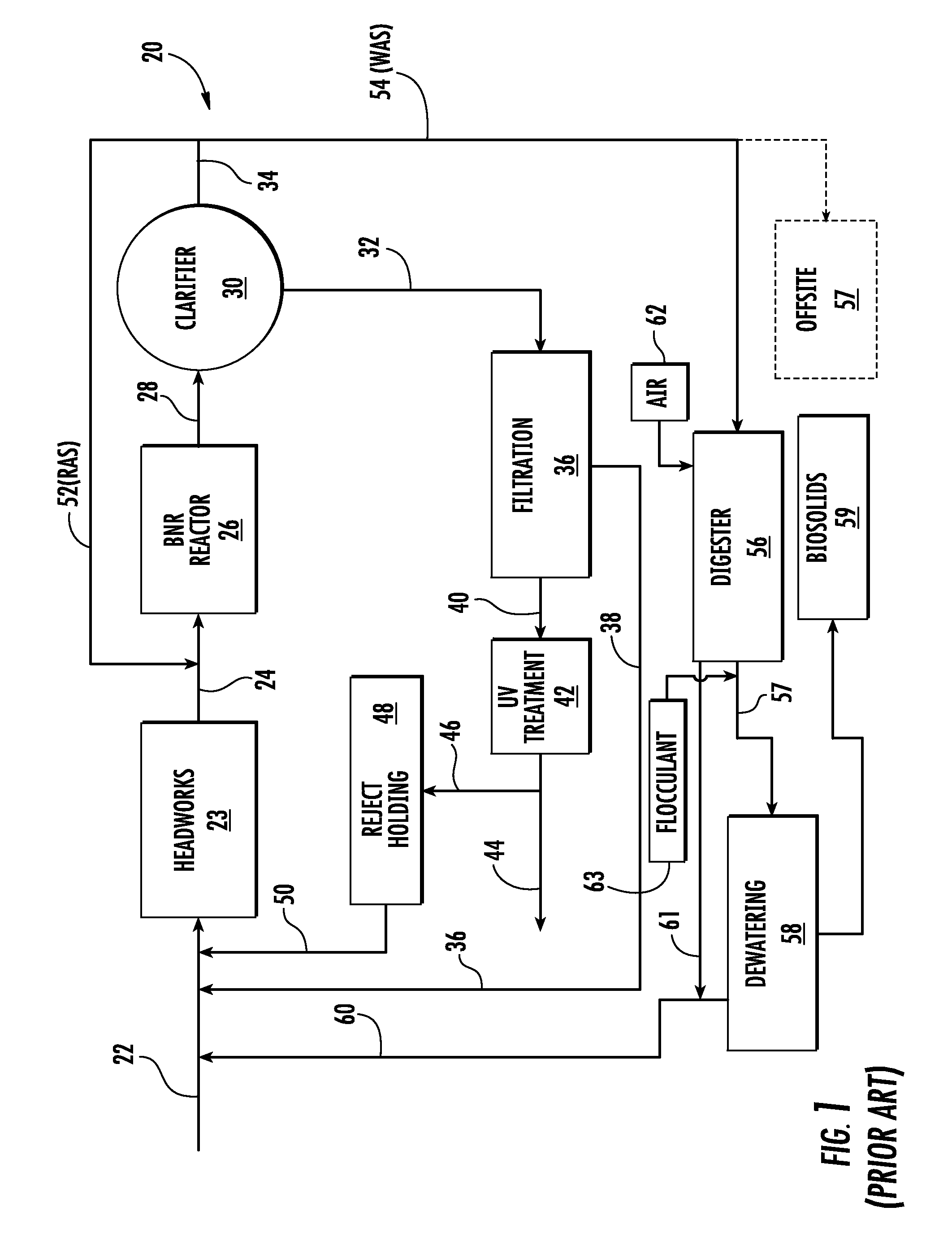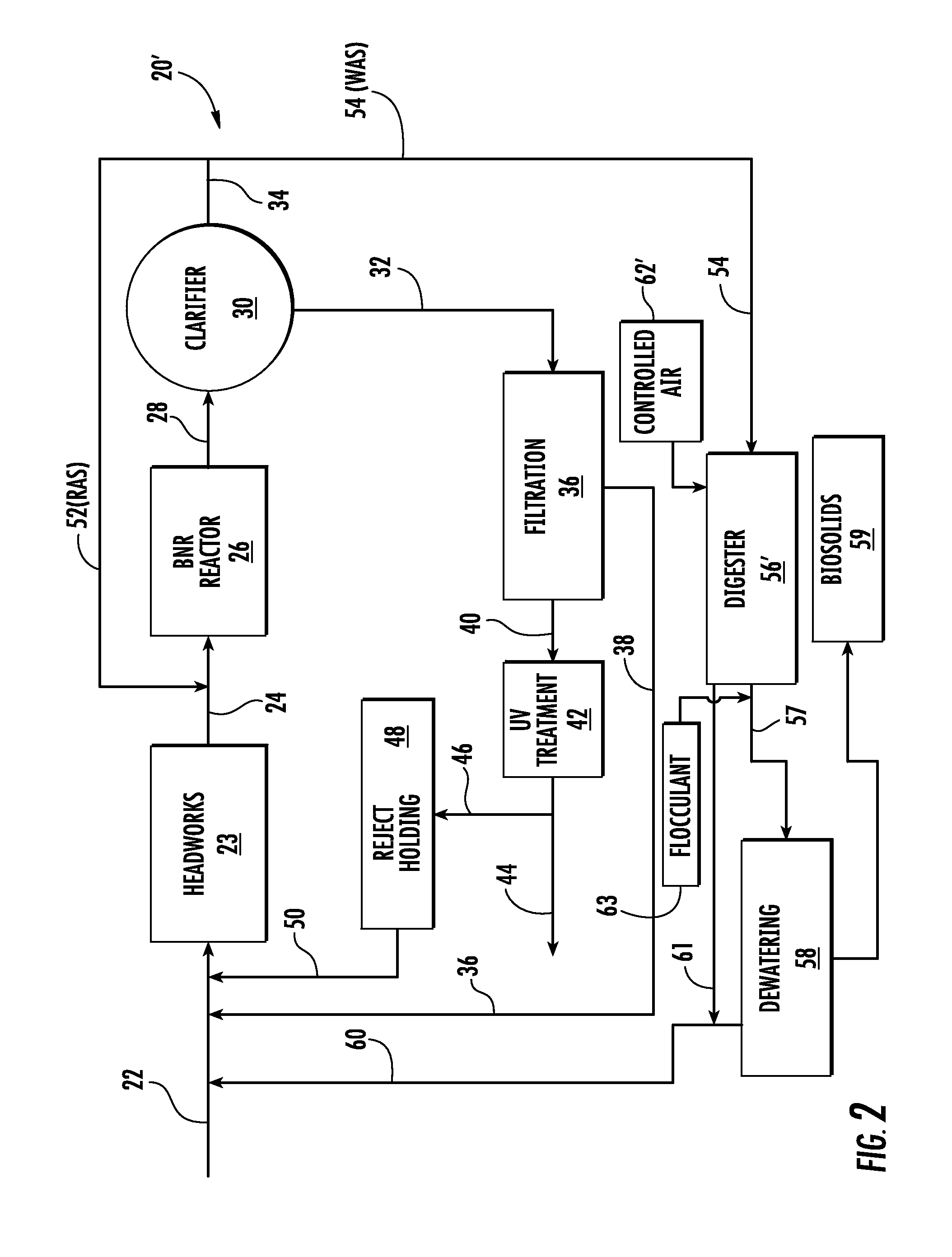Systems and Methods for Enhanced Facultative Biosolids Stabilization
a biosolids stabilization and facultative technology, applied in the field of biological wastewater treatment, can solve the problems of not meeting the minimum stabilization standards, cannot be used as fertilizer or otherwise disposed of in surface applications, and cannot meet the effluent requirements, so as to reduce the aeration cost of the digester, reduce the nitrogen in the digester side stream, and reduce the effect of orthophospha
- Summary
- Abstract
- Description
- Claims
- Application Information
AI Technical Summary
Benefits of technology
Problems solved by technology
Method used
Image
Examples
Embodiment Construction
[0061]The invention can best be understood with reference to the specific embodiments that are illustrated in the accompanying drawings and in the variations described below. While the invention will be so described, it should be recognized that the invention is not intended to be limited to the embodiments illustrated in the drawings; rather, the embodiments provided in this disclosure are intended to satisfy applicable legal requirements. The invention includes all alternatives, modifications, and equivalents that may be included within the scope and spirit of the invention as defined by the appended claims.
[0062]Biological wastewater treatment, including bio-solids stabilization, is described generally and schematically in the context of FIG. 1, labeled “Prior Art” in the above background of the invention and should be referred to for context. For purposes of the detailed discussion, the aerobic digester 56 in FIG. 1 may be considered to be replaced in FIG. 2 with modified digest...
PUM
| Property | Measurement | Unit |
|---|---|---|
| Time | aaaaa | aaaaa |
| Time | aaaaa | aaaaa |
| Time | aaaaa | aaaaa |
Abstract
Description
Claims
Application Information
 Login to View More
Login to View More - R&D
- Intellectual Property
- Life Sciences
- Materials
- Tech Scout
- Unparalleled Data Quality
- Higher Quality Content
- 60% Fewer Hallucinations
Browse by: Latest US Patents, China's latest patents, Technical Efficacy Thesaurus, Application Domain, Technology Topic, Popular Technical Reports.
© 2025 PatSnap. All rights reserved.Legal|Privacy policy|Modern Slavery Act Transparency Statement|Sitemap|About US| Contact US: help@patsnap.com



